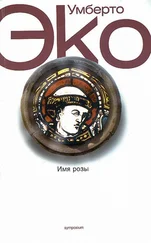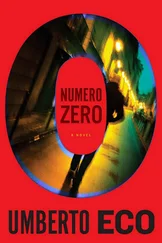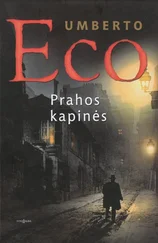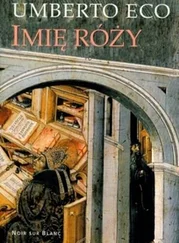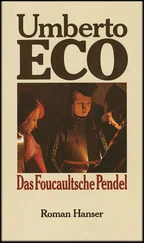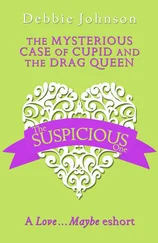Umberto Eco - The Mysterious Flame Of Queen Loana
Здесь есть возможность читать онлайн «Umberto Eco - The Mysterious Flame Of Queen Loana» весь текст электронной книги совершенно бесплатно (целиком полную версию без сокращений). В некоторых случаях можно слушать аудио, скачать через торрент в формате fb2 и присутствует краткое содержание. Жанр: Исторический детектив, на французском языке. Описание произведения, (предисловие) а так же отзывы посетителей доступны на портале библиотеки ЛибКат.
- Название:The Mysterious Flame Of Queen Loana
- Автор:
- Жанр:
- Год:неизвестен
- ISBN:нет данных
- Рейтинг книги:3 / 5. Голосов: 1
-
Избранное:Добавить в избранное
- Отзывы:
-
Ваша оценка:
- 60
- 1
- 2
- 3
- 4
- 5
The Mysterious Flame Of Queen Loana: краткое содержание, описание и аннотация
Предлагаем к чтению аннотацию, описание, краткое содержание или предисловие (зависит от того, что написал сам автор книги «The Mysterious Flame Of Queen Loana»). Если вы не нашли необходимую информацию о книге — напишите в комментариях, мы постараемся отыскать её.
The Mysterious Flame Of Queen Loana — читать онлайн бесплатно полную книгу (весь текст) целиком
Ниже представлен текст книги, разбитый по страницам. Система сохранения места последней прочитанной страницы, позволяет с удобством читать онлайн бесплатно книгу «The Mysterious Flame Of Queen Loana», без необходимости каждый раз заново искать на чём Вы остановились. Поставьте закладку, и сможете в любой момент перейти на страницу, на которой закончили чтение.
Интервал:
Закладка:
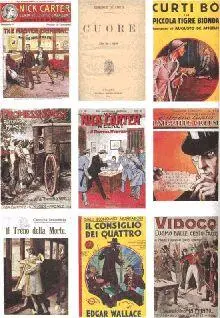
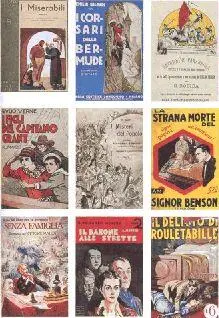
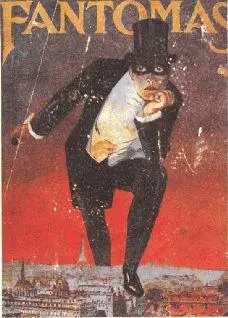
bodies, severed heads, and the prince of crime in his tailcoat, always ready with his derisive laugh to conjure and control a nocturnal, subterranean Paris.
And together there with Fantômas were the tales of Rocambole, another crime lord. The Woes of London fell open to a page on which I read this description:
At the southwest corner of Wellclose Square is an alley about ten feet wide; halfway down there stands a theater where the best seats in the house go for a shilling, and for a penny you may sit in the stalls. The leading actor is a Negro. There one may smoke and drink during the performance. The prostitutes who frequent the boxes are barefoot; the stalls are full of thieves.
Unable to resist the allure of evil, I spent the rest of the day with Fantômas and Rocambole, among their errant, dazzling pages, interspersing their stories with those of two other criminals: the gentleman burglar Arsène Lupin and an even greater gentleman, the supremely elegant Baron, an aristocratic jewel thief of many disguises, and of an exaggeratedly Anglo-Saxon appearance-thanks, I imagine, to some Anglophilic Italian artist.
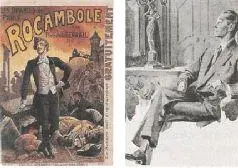
I trembled before a lovely edition of Pinocchio , illustrated by Mussino in 1911, its pages torn and coffee-stained. Everyone knows the story of Pinocchio; I had retained a cheerful, fairy-tale image of him, and who knows how often I told my grandkids his story to entertain them, and yet now I shuddered before those terrifying illustrations, most of them done in only two colors, either yellow and black or green and black, whose art nouveau whorls assaulted me in Fire-Eater’s riverlike beard, in the fairy’s unsettling blue hair, in the nocturnal visions of the Assassins, and in the Green Fisherman’s rictus. Did I cringe beneath the covers on stormy nights after having looked at that Pinocchio ? Weeks ago, I asked Paola whether all those movies on television, full of violence and the living dead, were bad for children, and she told me that one psychologist had revealed to her that in his entire clinical career he had never seen children seriously traumatized by a movie except in one case, and that child was irrevocably wounded to the core: devastated by Walt Disney’s Snow White.
And elsewhere I learned that equally terrifying visions lay behind my very name. I found The Adventures of Ciuffettino , by a certain Yambo, along with other adventure books by the same author, with more art nouveau drawings and dark scenery: castles standing out above steep hills, black against the dark night; flame-eyed wolves in phantasmal forests; underwater visions like something out of a homegrown, latter-day Verne; and Ciuffettino, the charming little boy with the quiff of a fairy-tale bravo: "An immense quiff that gave him a curious appearance, causing him to resemble a feather duster. And do you know, he was fond of his quiff!" That was where the Yambo I am now, and the one I wanted to be, was born. In the end I suppose it is better than identifying with Pinocchio.
Was this my childhood? Or worse? Still rummaging around, I brought to light (wrapped in blue sugar paper and held by rubber bands) various volumes of the Illustrated Journal of Voyages and Adventures on Land and at Sea. It had come in weekly installments,
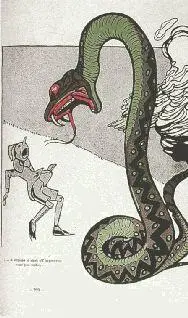
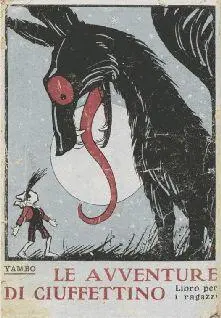
and my grandfather’s collection included issues from the first decades of the century, as well as a few copies of the original French edition, Journal des Voyages.
Many of the cover images depicted ferocious Prussians shooting valiant Zouaves, but for the most part they had to do with exploits of ruthless cruelty in foreign lands: impaled Chinese coolies, scantily-clad virgins kneeling before a gloomy Council of Ten, rows of decapitated heads atop sharpened poles in front of the buttresses of some mosque, children slaughtered by scimitar-wielding Tuareg raiders, the bodies of slaves torn apart by huge tigers-as if the Nuovissimo Melzi’s table of tortures had inspired these perverse illustrators, arousing an unnatural imitative frenzy. It was an overview of Evil in all its guises.
Faced with such abundance and stiff from sitting in the attic, and because the heat had become unbearable, I brought the stack of issues downstairs into the big room with the apples, and my first thought was that the apples lined up on the big table must all be moldy. Then I realized that the smell of mold came from the pages in my hands. But how could they smell musty after fifty years in the dry atmosphere of the attic? Perhaps in the cold, rainy months moisture came in through the roof and the attic was not quite so dry, or perhaps those issues, prior to being stored there, had spent decades in some cellar, where water trickled down the walls, before my grandfather discovered them (he too must have courted widows) in a state so rotten that they had never lost their odor, even in this heat that had shriveled them. But as I was reading about atrocious events and ruthless vendettas, the scent of mold conjured up not cruel feelings but rather thoughts of the Wise Men and Baby Jesus. Why? When did I ever have anything to do with the Wise Men, and what had they to do with massacres in the Sargasso Sea?
My concern at the moment was something quite different, however. If I had read all those stories, if I had really seen all those cover images, how could I have accepted that springtime comes

a-dancing? Did I have some instinctive ability to keep the realm of good, domestic feelings separate from those adventure stories that spoke to me of a cruel world modeled on the Grand Guignol, that realm of the torn asunder, the flayed, the burnt at the stake, the hung?
The first armoire had been completely emptied, though I had not been able to look at everything. On the third day I started in on the second one, which was less congested. These books did not appear to have been tossed aside by my aunt and uncle in their rabid haste to divest themselves of unwanted junk, but instead had been arranged in nice rows, as if by my grandfather in earlier times. Or by me. They were all books that were more suited to childhood, and perhaps they had belonged to my personal mini-library.
I took out the entire collection of My Children’s Library, the series published by Salani, whose covers I recognized and whose titles I began reciting, even before pulling out the individual volumes, as surely as I identified the most famous books-Münster’s Cosmographia or Campanula’s De Sensu Rerum et Magia -in a competitor’s catalogue or a widow’s library. The Boy Who Came from the Sea , The Gypsy’s Legacy , The Adventures of Sun-Blossom , The Tribe of Wild Rabbits , The Mischievous Ghosts , The Pretty Prisoners of Casabella , The Painted Chariot , The North Tower , The Indian Bracelet , The Iron Man’s Secret , The Barletta Circus…
Читать дальшеИнтервал:
Закладка:
Похожие книги на «The Mysterious Flame Of Queen Loana»
Представляем Вашему вниманию похожие книги на «The Mysterious Flame Of Queen Loana» списком для выбора. Мы отобрали схожую по названию и смыслу литературу в надежде предоставить читателям больше вариантов отыскать новые, интересные, ещё непрочитанные произведения.
Обсуждение, отзывы о книге «The Mysterious Flame Of Queen Loana» и просто собственные мнения читателей. Оставьте ваши комментарии, напишите, что Вы думаете о произведении, его смысле или главных героях. Укажите что конкретно понравилось, а что нет, и почему Вы так считаете.

